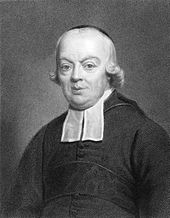Manualism
Manualism is a method of

Origins
The first manual schools were in
L’Épée opened a free national school for the deaf in his home, on 14 Moulins Street (now called Thérèse Street). After his death in 1789,
Early deaf education in America
Laurent Clerc, a graduate from the school and pupil of l’Épée and Sicard, returned to the school as a teacher. He was teaching there in 1816 when Thomas Hopkins Gallaudet visited. Gallaudet met nine-year-old Alice Cogswell who knew no form of communication system. He learned of Sicard's theories and started tutoring Alice. Gallaudet traveled to Europe in May 1815 and attended demonstrations in France led by Sicard, Clerc, and Massieu. He returned in March 1816 and persuaded Clerc to return with him to the United States.
Back in the US, they searched for funds and public support. Together, they established the first deaf school in the United States on April 15, 1817, in
Decline
Manual education remained the primary method to educate deaf people until the 1860s. People then begin to subscribe to more oralist methods of education: lip reading and speech training. In 1867, the first private oral school opened in New York City.[5] The oral movement took off in full swing at the Milan Conference of 1880 in which Alexander Graham Bell declared oral methods superior to manual methods. After the conference, schools all around Europe and the United States switched to using speech and lipreading, banning all sign language from the classroom. The deaf community was left in what some call the "dark ages".[2]
Revival

While working at Gallaudet University in the 1960s, William Stokoe felt that American Sign Language was a language in its own right, with its own independent syntax and grammar. Stokoe classified the language into five parts which included: handshapes, orientation, location, movement, and facial expression in which much of the meaning of the sign is clarified as well as the grammar of the sentence expressed.[6] Some sign languages, such as American Sign Language, have been promoted as the traditional way of communication for deaf people.[7] Manualism is combined with oralism as the contemporary technique for the education of deaf students.[8]
See also
- Manualism and oralism
- Deaf culture
- History of sign language
- Deaf education
References
- ISBN 9780226039640. Retrieved 2011-03-18.
- ^ a b c Wolkomir, Richard; Johnson, Lynn (July 1992). "American Sign Language: 'It's not mouth stuff--it's brain stuff.'". Smithsonian. Vol. 23, no. 4. p. 30. Archived from the original on 2015-12-08. Retrieved December 1, 2015.
- ^ "The national institute for the Deaf". Institut National de Jeunes Sourds de Paris. 28 February 2013. Retrieved December 1, 2015.
- ^ ISBN 9780786488544. Retrieved December 1, 2015.
- ^ "Signs and Wonders: Religious Rhetoric and the Preservation of Sign Language". Washington, D.C.: Gallaudet University Press. Retrieved December 1, 2015.
- ^ Bauman, H-Dirksen, ed. Open Your Eyes. Minneapolis: University of Minnesota Press, 2008. 15.
- ISBN 9780520229754. Retrieved December 1, 2015.
- ISBN 9788171418312. Retrieved December 1, 2015.
